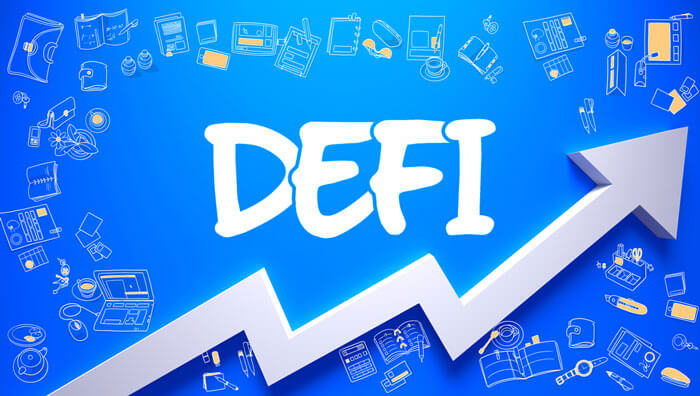Technology
Why Defi Investing Will Replace Active Investing
by Author
-
Wednesday, August 31, 2022
499 Views
With more than $50 trillion in assets under management, the active investing industry directly impacts us via savings or capital allocation across geographies, industries, or asset classes.
As a result of its openness and transparency, DeFi has the potential to render the active investment industry obsolete, resulting in superior strategies and capital allocation. This will increase competition, options, and yield (interest/returns) for savers and investors.
This article describes the present state of active investing in DeFi and explains why DeFi is the future of active investing. Please also see our article titled Why DeFi is the future of passive investing.
How Active Investing is Conducted at Present
When establishing a fund, which is a capital pool, a fund manager (like Fidelity or Bridgewater) engages in active investing. The public and other financial institutions can purchase shares of the fund (such as pension funds).
The objective of the fund is to outperform the market over time by investing its capital in a diversified portfolio of assets in accordance with a predetermined investment strategy. This objective is achieved by investing in assets, such as stocks, bonds, commodities, real estate, and derivatives, that the fund manager believes are undervalued and will provide a disproportionately high return relative to their level of risk. The fund’s value fluctuates in tandem with its underlying portfolio.
In order for the fund to outperform the market as a whole, the fund manager conducts research, verifies and reports on its strategy, and rebalances its portfolio by trading assets where it sees investment opportunities. These trades are executed by brokers, exchanges, clearinghouses, and custodians, who all charge a fee.
Active funds charge their investors substantially more than passive funds, typically 1 percent of the fund’s value per year, or 2 percent of the total value and 20 percent of returns in the case of certain active specialised managers such as hedge funds.
How Active Investing in DeFi Operates
Active managers in conventional finance can be replicated in DeFi by a yield optimizer decentralised application (dApp) such as Yearn Finance (although asset manager and yield farmer are also used interchangeably).
These decentralised applications have the same objective as active investment funds in traditional finance: to outperform the market. Nonetheless, they are governed and implement their respective strategies in vastly different ways.
How a Simple Yield Optimisation dApp on the DeFi Blockchain Operates
An investor deposits a token, such as USDC, into a decentralised application in exchange for a fund token representing a claim on a portion of the fund. The investor deposits are then used to purchase a portfolio of underlying assets. The fund’s portfolio is rebalanced over time by exchanging assets for better opportunities. As the value of the underlying assets increases, so does the value of the investor’s redeemable fund token.
Who Decides the Fund’s Investment Strategy and Transactions?
In lieu of a fund manager making investment decisions, DeFi dApps are programmed with automated, continuous investment strategies. This is only possible in DeFi if a smart contract on a shared platform has direct access to assets and other financial services and products.
Frequently, a DAO governs the selection and configuration of investment strategies. Using trustless and transparent tokens and smart contracts, a DAO is a method for coordinating a group of individuals with a common goal. Collective decisions are made using votes that are weighted in a variety of ways.
As its community votes on each fund’s investment strategy and allocation, Yearn Finance is one of the most prominent examples of DAO-based decision making. To maximise return, new investment opportunities are discussed frequently. Depending on the fund’s risk appetite, these opportunities can consistently yield between 5 and 30 percent per year.
Another example is Numerai, a decentralised application for yield optimization. Instead of voting directly on which assets to acquire, members of this community vote on artificial intelligence algorithms and data sources in order to optimise trading and capital allocation. Fully decentralised, Numerai is able to recruit some of the world’s most talented data scientists, rewarding them for producing the best algorithms and data. Since 2021, the top Numerai funds have generated returns greater than 800%.
Where Does the Return Come From?
Today, yield in DeFi typically originates from one of the three sources listed below:
Price fluctuations may result in a yield if the portfolio of tokens underlying the security increases in value (which can include derivative tokens that rise as other tokens lose value).
These tokens are newly minted when a protocol or decentralised application mints new tokens as a reward for a specific action. To compensate liquidity providers, a decentralised exchange might mint governance tokens. Similar to dYdX, dApps may offer retroactive airdrops of governance tokens to entice users to utilise their dApp. Layer 1 protocols mint new tokens to encourage token holders to stake their tokens in a proof-of-stake security system. Even though it may appear that money is being created out of thin air, these tokens have real value and utility on the market.
Those who utilise a certain product or service might incur fees and interest. For example, the Curve DEX charges CRV governance token holders fees. In addition, holders of liquidity provider tokens collect fees directly from users who trade with automated market makers. Borrowers pay interest to those who lend assets through decentralised applications such as Aave and Compound.
How DeFi Can Benefit Active Investing
Active investing in conventional finance and yield optimization in DeFi share three elements: an investor, a fund manager, and a settlement procedure.
In contrast to the closed and opaque ledgers of numerous financial institutions, all three components of a DeFi ecosystem reside on the same public, decentralised ledger. This leads to:
- A financially open and transparent system in which anyone can participate and construct; and
- Automated transaction processing increases efficiency, decreases costs, and reduces entry barriers for new projects.
- Openness leads to better strategies.
- In DeFi, fund managers are replaced by decentralised, self-executing applications. Through the governance and incentive mechanisms of a DAO, anyone can create their own fund or contribute to the strategy of an existing fund. DeFi yield optimizers have access to a much larger knowledge base than conventional fund managers because anyone with Internet access can contribute. The Annual Millennium Prize serves as an example.
Moreover, rather than data being siloed and hidden within the ledgers of individual financial institutions, the transparent nature of decentralised public ledgers provides a robust and trustworthy dataset upon which investment strategies can be developed. Due to the availability of all data, “cooking the books” will become obsolete. Because everything is visible, everyone is required to be competitive.
Composability Drives Innovation Multiplication
In conventional finance, a series of siloed institutions coordinate active investment products and services. Due to the fact that each institution owns its own systems and data, it is difficult to build upon one another, resulting in a significant amount of waste as the same products and services are replicated a hundred times.
As all dApps in a DeFi ecosystem exist on the same distributed ledger, it is possible to combine products and services seamlessly. If a DeFi project develops an optimal algorithm for switching capital between various liquidity pools, that algorithm is open to use and improvement by anyone.
This allows an infinite number of products and services to be layered, forming a chain of tokens and decentralised applications to which anyone can contribute. How can conventional finance’s closed and compartmentalised products and services compete with an open, self-evolving yield optimization machine’s innovative capabilities?
Automation and Capability for Composition Provide Instant Liquidity
DeFi eliminates the need to wait two days for a multitude of intermediaries to settle the trade behind the scenes, as all transactions are recorded on the same ledger. This enables DeFi yield optimizers to allocate capital instantly to the location with the highest yield, resulting in dramatically reduced fees, increased participation and accessibility for all, and capital that is automatically programmed to seek the highest returns.
What Does Tomorrow Hold?
Currently, the vast majority of DeFi’s yield is derived from the closed loop of cryptocurrencies, which is still heavily influenced by speculation. The yield is not derived from tangible assets, such as rental income or dividends from a company.
Although it is still early, DeFi has thus far demonstrated a more efficient and optimal asset allocation paradigm. Assuming that capital seeks the highest risk-adjusted returns, it is only a matter of time until $400Tn of real-world assets are represented by tokens and managed by DeFi.
Now is the time to hire a reputable Defi development services provider and to begin earning profits.






